![]()
![]()
![]()
Use LEFT and RIGHT arrow keys to navigate between flashcards;
Use UP and DOWN arrow keys to flip the card;
H to show hint;
A reads text to speech;
13 Cards in this Set
- Front
- Back
- 3rd side (hint)
|
What do brooches, mirrors and clothing represent? |
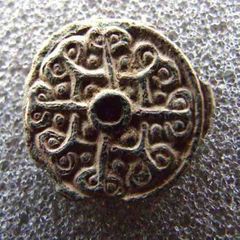
• Represent cults, households, sewn to clothing. • Mirrors ‘radiate grace’ but also represent female vanity. • Clothing distinguishes m/f, female oppression. It was profitable for the war in France to tax clothing. |
Cult, grace, oppression |
|
|
Why is diet and dress remains biased? |
It’s limited to high-profile individuals in towns which are well-preserved. |
High-profile |
|
|
What about medieval food? |
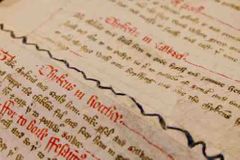
50 cookbooks C. 1250 Green veg was considered poisonous I.e. Boke of Kervynge Grain makes up 65-80% calorific intake i.e. New Shires Bread Oven |
Cooking, veg and grain |
|
|
What about drink? |
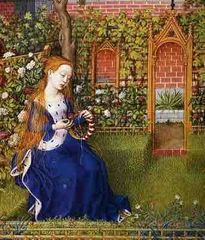
A gallon of ale a day per household. Wine was limited Little vineyard evidence I.e. Domesday Book and Saintonage wear 14th c. Gardens were female spaces I.e. South Middleton, Belgrave Moat |
Female, ale |
|
|
What about meats? |
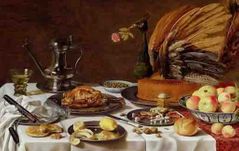
Beef and mutton were the main meats. Pigs were reserved for nobility as the woodland disappeared. Venison could only be gifted or hunted by royalty I.e. shoulder to the Forester, hind legs for a feast, and liver to the lord. Chicken were common, geese were rural. Dovecotes and peacocks were elite I.e. carisbrooke castle, and swanneries at Colmworth Manor There were 3 designated fish i.e. fish basket Severn estuary, fishponds at ‘Bedehouse’. Pike was elite and associated with Christ’s passion i.e. Quantoxhead manorial Curia (layout). |
Beef/pigs/venison/chicken/fish |
|
|
When did dining become private? |
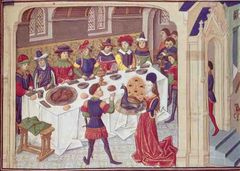
13-14th centuries And people weren’t happy I.e. William Langland’s unhappy poem. Cutlery with mazer (wooden bowl) and trencher (bread plate). I.e. The RAMM museum, ‘costrel’ from London. Hygiene was important and religious I.e. aquamanile The British Museum and lavatorium in Gloucester Cathedral Pottery was a common commodity and often made humorous, I.e. Anthropomorphic jug North Yorkshire Was originally industry-owned Stamford wear but made from 12th century by peasant craftsmen I.e. Oxfordshire pitchers, 15th c. RAMM stoneware |
Cutlery? |
|
|
What about medieval clothing? |
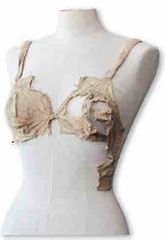
It’s a social skin. From 13th c. There is an Expense Law to raise money for war and prevent aristocrats overspending. Few arc evidence: Perth Scotland, Herjolfsnes 14-15th c. permafrost Greenland cemetery Relies mainly on manuscripts -> Plentiful, biased, exaggerated I.e. Roman d’Alexandre, and effigies which idealise 30 and are generic. Materials: fur, silk, velvet, lace. Woollen garments with linen undergarments, head covering and simple tunic were worn until 14th century. 1350 fashion revolution and sexualisation -> bright, tight, male legs, wider belts, buckles to draw attention to the waist and poulaines I.e. Museum of London, and weapons I.e. phallic knives on the Mary Rose In the 15th century are leather jerkins which are deliberately cut to emulate military fashion I.e. Mary Rose Clothing returns to simple in the 16th century I.e. London |
13th century, materials, wool, peasants |
|
|
What did women and children wear? |
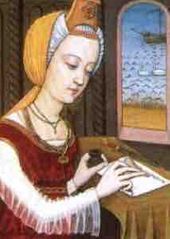
Women wore a globular hairpin for a headdress, symbolising marriage I.e. Seven Works of Mercy There were wimples and simple veils until 15th century, when tall headdresses and circlets were introduced i.e. Silk hairnet 14th c. London, Memento Homo (no vanity). Children were gendered with buckles or hairpins by 8, but not fashioned I.e. Shoe from London |
Hairpins, hairdresses |
|
|
What is in the archaeological record? |
Waterlogged clothes I.e. the Thames Permafrost clothes I.e. Greenland Only nobles are buried with clothes. Effigies idealising 30 Bias towards leather. |
Places and ideals. |
|
|
What about feasting? |
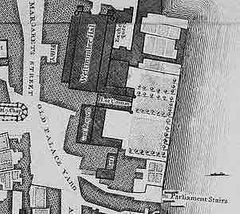
• At Westminster Palace in 1244, 300 piglets were driven from Wiltshire to London for a feast. •Nobility were the only ones who could afford fresh meat daily. |
Westminster Palace 1244, 300 pigs, fresh meat |
|
|
How were women depicted during feasting? |
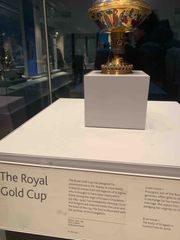
•The legend of St Agnes on the french Royal Gold Cup shows the value of women in keeping chaste and virginal. •Although the story surrounding St. Agnes on the cup involves sexual violence against women, it is placed on feasting tables to enjoy whilst eating. |
Chaste and virginal St. Agnes, French Royal Gold Cup. |
|
|
What about badges? |
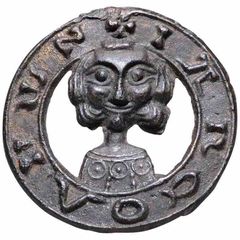
• Cordwainers charged extortionate prices for admission to their guild, and therefore masters would be high-ranking. There was a hierarchy. • Weavers went out of business after non-guild members began crafting and put them out of business, as they had to pay the king £6 a year and was pardoned of debt after the Black Death. A medieval seal matrix of the weavers' guild survives: a shield, depicting an ox, a fleur de lys, a shuttle, and cards. •Brewers were controlled by the university, who provided rotas for everyone in the guild to follow, upon pain of fine. There was tension between high/low status brewers due to grain prices rising and new rotas favoured low-status brewers but this resulted in an ale shortage. |
|
|
|
What about badges? |
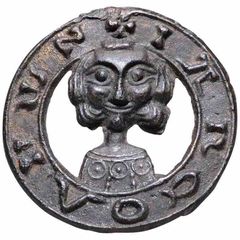
OXFORD: • Cordwainers charged extortionate prices for admission to their guild, and therefore masters would be high-ranking. There was a hierarchy. • Weavers went out of business after non-guild members began crafting and put them out of business, as they had to pay the king £6 a year and was pardoned of debt after the Black Death. A medieval seal matrix of the weavers' guild survives: a shield, depicting an ox, a fleur de lys, a shuttle, and cards. •Brewers were controlled by the university, who provided rotas for everyone in the guild to follow, upon pain of fine. There was tension between high/low status brewers due to grain prices rising and new rotas favoured low-status brewers but this resulted in an ale shortage. •Bakers split into white and brownbread guilds in 1507, and white breaders questioned the ‘purity’ of corn used to make brown bread. Innkeepers were also banned from making white or wheaten bread. • Tailor guild was founded on St. John the Baptist day. The university had a monopoly over the guild, and tried to force scholars to join the guild, at which point the town claimed it was illegal using the Wolsey Charter, and the university ceased control by 1550. |
Cordwainers, Seaver’s, brewers, bakers and tailors |

